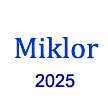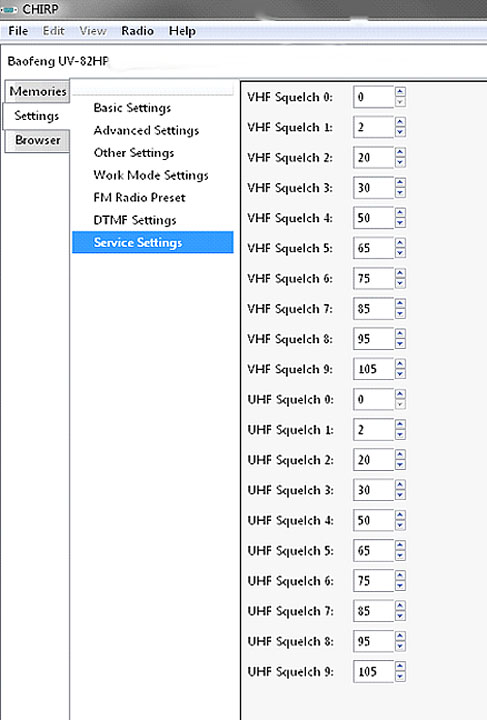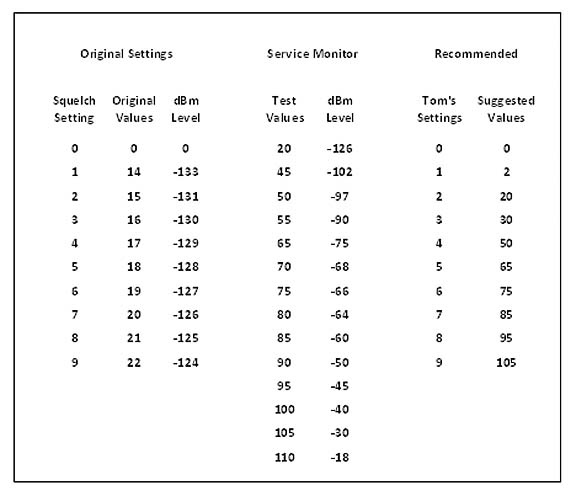
Adjusting the internal Squelch Levels
UV5R / UV82 / F8HP / 82HP series
January 2016
Jim KC6HI Tom KD4WOV
Requires
CHIRP Daily Build
Modifying settings will change the way your
radio performs. Change them at your own risk.
This is not compatible with UVB5/B6 or BF888S models
due to differences in firmware. |
The factory's internal squelch level settings have long
been known to have little or no impact on the actual
squelch range. The smallest noise burst would easily open
the squelch regardless of setting 0 thru 9. Until now, it was one of those little
'quirks' you just needed to tolerate.
But no longer... Through the efforts of Jim KC9HI
and the CHIRP development team, this has become a thing
of the past. A new 'Service Settings' tab has been
added to CHIRP which allows
you to alter the range of squelch settings.
Tom KD0WOV did a series of tests with a commercial
service monitor and developed a 'preferred' settings
chart which will work with any of the UV5R/UV82 series.
These settings will vary your squelch sensitivity to
provide a smooth transition, where a weak signal can open level 1, and only a monster signal can open level 9.
Compatibility
There are too many Baofeng/Pofung models, variants, and firmware versions
to be certain which radios are compatible and which ones aren't.
Testing that has been done indicates the following:
The CHIRP Service Settings will adjust the levels on:
- UV82 series radios (82L / 82C / 82X / 82HP)
- F8HP series radios
- UV5R series radios with firmware BFB291 and
later.
PowerOn while holding '3' button displays firmware on
UV5R.
Note: The squelch levels on the UVB5 / 6 can also be
changed with CHIRP, however the format is slightly
different.
The Fix
Most standard factory levels range from a low of 14-22
to a high of 40-48, both of which are low, and offer
very little variation of squelch levels.
Using the settings below spreads the range from 2-105.
CHIRP allows you to select values up to
123, however anything much over 105 will not open the
squelch.
Testing (Menu 0)
After changing the values, test the different levels to determine which is the best for your type of operation. The
simplest test is to set your radio to a constant signal,
such as NOAA (US) or a local repeater.
Note:
Try it. YMMV. If it doesn't work, restore from your backup
image.
You did make a backup image, didn't you?
|

Below shows the Original
Settings of the test radio. Sensitivity
readings were taken using a calibrated service
monitor. This is where the suggested levels were
determined to produce the smoothest range.
For reference, a -126 dBm level will open the
squelch with anything above a noise burst, while
-18 dBm will not open the squelch at all. |

Although the above settings
(0-105) will take the squelch range through the
radios entire capability, I found that any
setting over 65 was too tight for my normal use.
As a result, I use a lower range with a wider
spread at the low end. (0-65)
A sample of those settings can be found at
Spread 6 and
Spread 8
There is no one perfect setting. Select a range that works for you.
|
For 'Before and After' measurements,
visit
the WordPress article. |
|
|
|
|